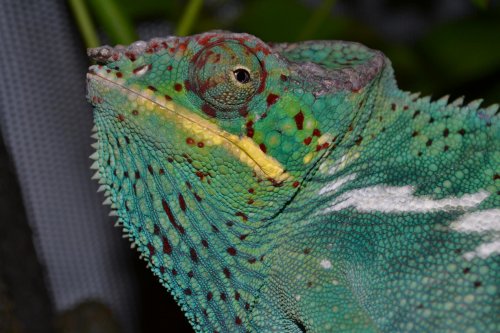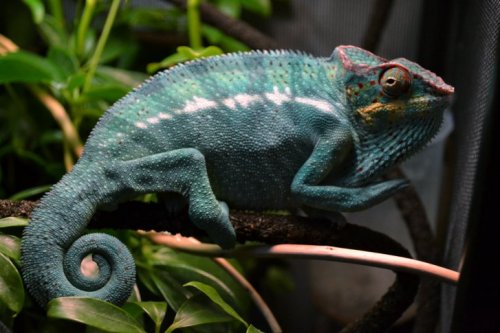JonRich
New Member
So this topic has been coming up a lottt lately. And I'm really curious about it.
My question is . Are ALL Furcifer pardalis capable of having the yellow cheeks, eyes turrets and lips???
The Furcifer pardalis that I have seen that do have the yellows are WC/F1 Ambanjas and Nosy Faly.
I have noticed that 90% of the Furcifer pardalis I see have white markings in the "lips" and "cheeks", but only some Ambanjas and Falys have yellow shading incorporated into it (these just so happen to be WC/F1s). Are the white markings there to make the yellow stand out more?
And why is this "yellow" not the case in Ambliobes, Sambavas, etc.
ARE THEY ALL CAPABLE OF THE YELLOW? IS IT JUST A TRAIT FOR THESE LOCALS OR A DIET ISSUE. (Like Flamingos are with eating shrimps to get the pink pigment in their feathers)
Attached pix are of my F2 (possible F3) Ambanja, and my CB Ambanja showing the white "lip" i'm talking about. Is that area suposed to be yellow in Wild Chams?


I did not have permission to add any photos of Chams showing this "yellow" coloring. So members that do own these please post for visual aid.
My question is . Are ALL Furcifer pardalis capable of having the yellow cheeks, eyes turrets and lips???
The Furcifer pardalis that I have seen that do have the yellows are WC/F1 Ambanjas and Nosy Faly.
I have noticed that 90% of the Furcifer pardalis I see have white markings in the "lips" and "cheeks", but only some Ambanjas and Falys have yellow shading incorporated into it (these just so happen to be WC/F1s). Are the white markings there to make the yellow stand out more?
And why is this "yellow" not the case in Ambliobes, Sambavas, etc.
ARE THEY ALL CAPABLE OF THE YELLOW? IS IT JUST A TRAIT FOR THESE LOCALS OR A DIET ISSUE. (Like Flamingos are with eating shrimps to get the pink pigment in their feathers)
Attached pix are of my F2 (possible F3) Ambanja, and my CB Ambanja showing the white "lip" i'm talking about. Is that area suposed to be yellow in Wild Chams?


I did not have permission to add any photos of Chams showing this "yellow" coloring. So members that do own these please post for visual aid.
Last edited:







